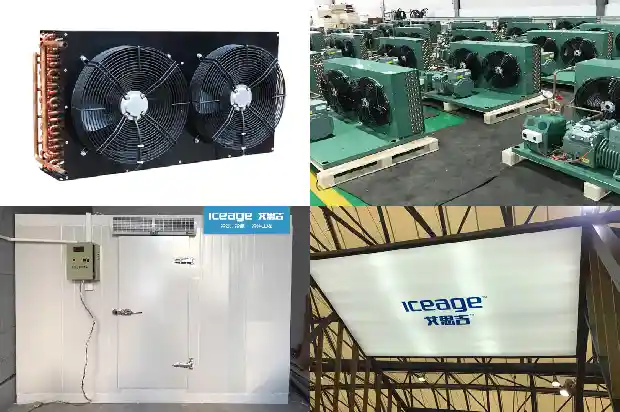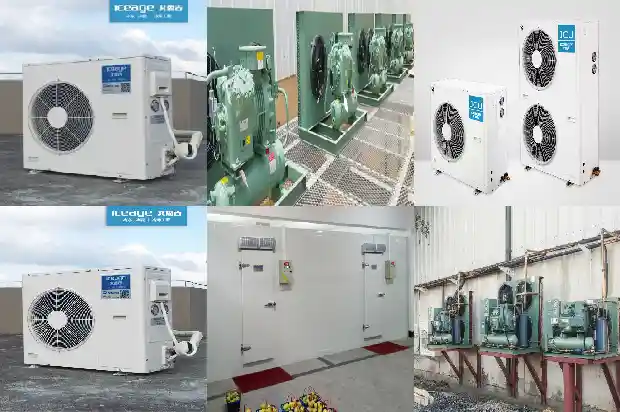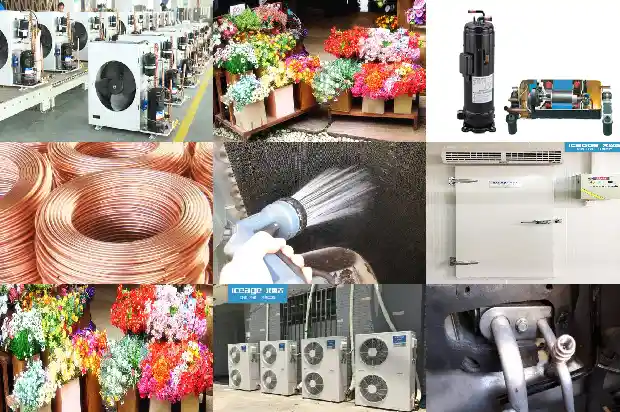Introduction to the Application of End - product, Fan and Motor Characteristics (Fan - coil Unit Section)
2025-03-17
Introduction to the Application of End - product, Fan and Motor Characteristics (Fan - coil Unit Section)
Fan - coil Unit System: It is an all - water system commonly serving the perimeter zones of buildings. This is a widely applicable and cost - effective system, which can be used to handle some independently controlled zones in buildings with different load characteristics.
Current Fan - coil Unit Types in the Market
Installation Positions of Different Types of Fan - coil Units
Vertical Unit: Installed visibly or concealed under the window.
Horizontal Unit: Installed visibly or concealed on the ceiling of the corridor.
Column - type Unit: Installed visibly or concealed from floor to ceiling with water pipes inside.
Embedded Unit: Inlaid in the wall - with a panel.
Installation Positions of Different Types of Fan - coil Units
Vertical Unit: Installed visibly or concealed under the window.
Horizontal Unit: Installed visibly or concealed on the ceiling of the corridor.
Column - type Unit: Installed visibly or concealed from floor to ceiling with water pipes inside.

Embedded Unit: Inlaid in the wall - with a panel.
Common Fan - coil Units in the Market:
Basic Components of Fan - coil Units:
Basic Parameters of Fan - coil Units: Air volume, cooling capacity, heating capacity, static pressure, noise, water resistance, input power, water supply, and temperature difference between inlet and outlet water.
Basic Components of Fan - coil Units:
Basic Parameters of Fan - coil Units: Air volume, cooling capacity, heating capacity, static pressure, noise, water resistance, input power, water supply, and temperature difference between inlet and outlet water.
Basic Parameters of Fan - coil Units and Their Conversion Relationships:
Fan - coil Unit Air - conditioning System:
Water Pipe Distribution System:
Switchable Two - pipe System: Standard fan - coil unit.
The switchable two - pipe system has one supply pipe and one return pipe, connected to the coil of the room terminal device. The two - pipe system is used in temperate regions with very small heat loads. During normal system operation, there is cold water or hot water circulating in the pipeline. However, it is impossible for cold and hot water to circulate simultaneously in the pipeline. The system must be switched twice a year, in spring and autumn. This may cause discomfort in the rooms at certain times of the year. For example, some rooms need heating while some need cooling. Sometimes, the problem can be solved by zoning the pipeline system, but this is not always feasible.
Adding an auxiliary electric heating coil to the two - pipe system can solve the problem of discomfort in the rooms. In this way, the system can use cold water all the time until the outdoor conditions require heating, and then the system switches from cooling to heating.
Non - switchable Four - pipe System: Combined - coil fan - coil unit.
The four - pipe fan - coil unit system is so named because it has a cold - water supply pipe, a cold - water return pipe, a hot - water supply pipe, and a hot - water return pipe, with a total of four pipes connected to the indoor fan - coil unit device.
The indoor device can choose either two coils with valves or one coil with special three - way valves at both the inlet and outlet. The choice between the two forms only depends on the difference in the total cost of the terminal device and the control valves.
Since the four - pipe system can enable the terminal device to heat or cool simultaneously, the indoor environment remains satisfactory at all times, regardless of changes in the indoor load.
Fan - coil Unit Air - conditioning System:
Water Pipe Distribution System:
Switchable Two - pipe System: Standard fan - coil unit.
The switchable two - pipe system has one supply pipe and one return pipe, connected to the coil of the room terminal device. The two - pipe system is used in temperate regions with very small heat loads. During normal system operation, there is cold water or hot water circulating in the pipeline. However, it is impossible for cold and hot water to circulate simultaneously in the pipeline. The system must be switched twice a year, in spring and autumn. This may cause discomfort in the rooms at certain times of the year. For example, some rooms need heating while some need cooling. Sometimes, the problem can be solved by zoning the pipeline system, but this is not always feasible.
Adding an auxiliary electric heating coil to the two - pipe system can solve the problem of discomfort in the rooms. In this way, the system can use cold water all the time until the outdoor conditions require heating, and then the system switches from cooling to heating.
Non - switchable Four - pipe System: Combined - coil fan - coil unit.
The four - pipe fan - coil unit system is so named because it has a cold - water supply pipe, a cold - water return pipe, a hot - water supply pipe, and a hot - water return pipe, with a total of four pipes connected to the indoor fan - coil unit device.
The indoor device can choose either two coils with valves or one coil with special three - way valves at both the inlet and outlet. The choice between the two forms only depends on the difference in the total cost of the terminal device and the control valves.
Since the four - pipe system can enable the terminal device to heat or cool simultaneously, the indoor environment remains satisfactory at all times, regardless of changes in the indoor load.
Sources of Fresh Air:
Infiltration (a): -- Method of the all - water system.
Fresh air introduced through a wall opening (b): -- Effect of wind pressure.
Independent fresh - air system (c): -- The best method.
Inner - zone extension (d): -- Mixed air of the return air from the inner - zone air - conditioning system and outdoor fresh air.
Infiltration (a): -- Method of the all - water system.
Fresh air introduced through a wall opening (b): -- Effect of wind pressure.
Independent fresh - air system (c): -- The best method.
Inner - zone extension (d): -- Mixed air of the return air from the inner - zone air - conditioning system and outdoor fresh air.
Advantages of the Fan - coil Unit System:
- Can blow directly or connect to the air duct.
- The control system is simple.
- Occupies less space for installation.
- Appropriate energy sources can be selected for the chiller and the boiler.
- Can supply fresh air directly to the room.
- Can turn off the terminal device in unoccupied rooms.
Disadvantages of the Fan - coil Unit System:
- Requires indoor maintenance and management.
- The indoor terminal device has a wet coil (which can breed bacteria).
- When fresh air is introduced through a wall opening, the chimney effect and the action of wind pressure will affect the effect.
- It is impossible to use high - efficiency filters and spray - type coils.
- Many small motors with a low power factor result in low power transmission efficiency and increased energy consumption.
- The indoor relative humidity control is not very good.
Design Steps of the Fan - coil Unit System:
- Determine the controlled zone.

- Calculate the peak cooling load and heating load.
- Select the fan - coil unit terminal device:
3.1 Select the type of the terminal device product.
3.
2 Select the size of the terminal device.
- Select the control type of the terminal device.
- Layout the chilled - water pipeline.
- Layout the condensate - water pipeline.
- Select the chiller.
Related Articles
- Comprehensive Introduction to Chilled Water Systems of Large - scale Central Air - conditioners
- Introduction to Inspection and Handling Methods for Refrigerant Leak in Cold Storage
- Introduction to Control Valves in Refrigeration Systems
- Introduction to Basic Types of Cold Storage
- Introduction to Lithium Bromide Absorption Chillers
- Introduction to the Advantages of Dual - temperature Cold Storage
- Introduction to Various Water Tanks in Air - conditioning Systems
- Introduction to the Cleaning Processes and Methods of Heat Exchangers and Cooling Towers
- Introduction to Six Kinds of Two-stage Compression Refrigeration Systems
- Introduction to Key Points of Compressor Grouping in Quick-freezing Cold Storage
- Introduction to the Construction and Features of Cold Storage in Cold Chain Logistics
- All-round Introduction to Condensers and Evaporators!
- Introduction to Vapor Barrier of Cold Storage and Moisture Protection of Equipment
- Introduction to Oil Collector in Refrigeration System
- Technical Introduction of Process Cooling Water System
- Introduction to Air-cooled Chiller
- Introduction to Five Classification Functions of Cold Storage Installation for Refrigeration
- Introduction to Precooling Methods for Fruits and Vegetables
